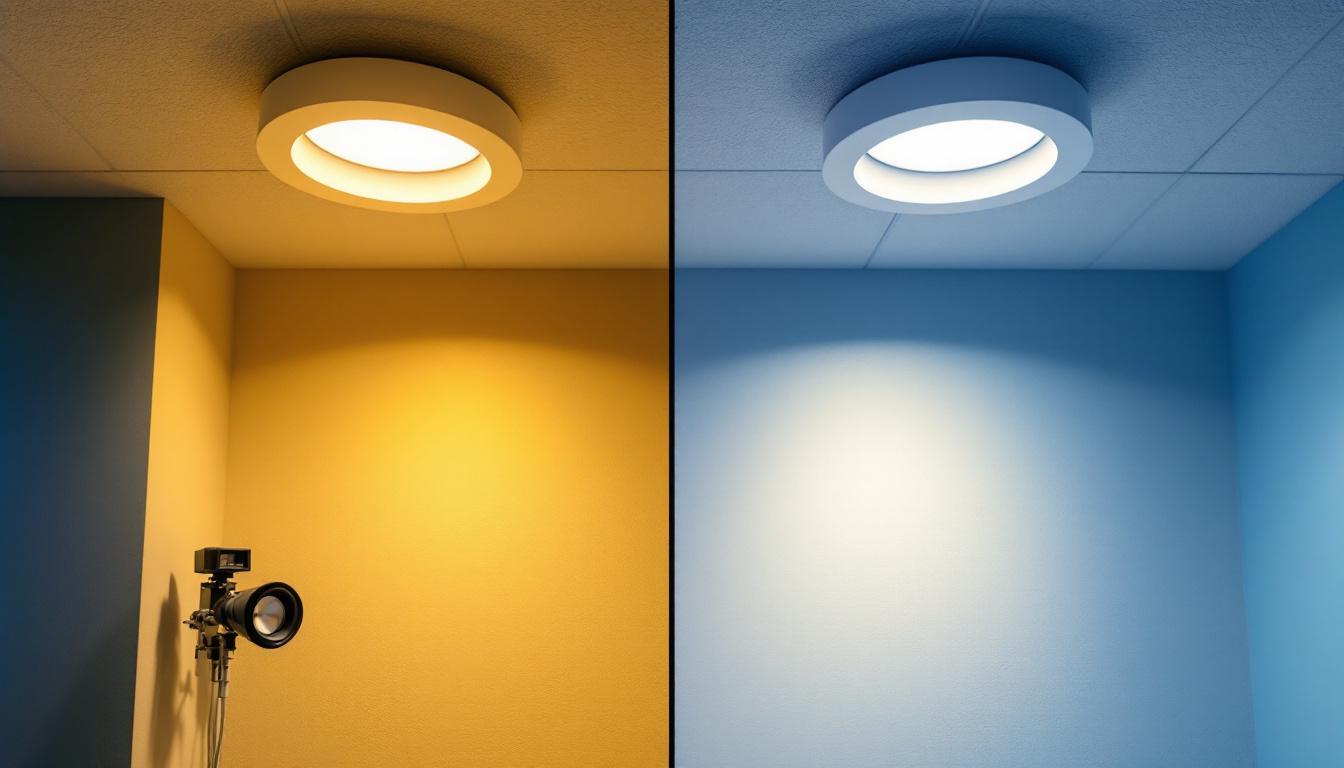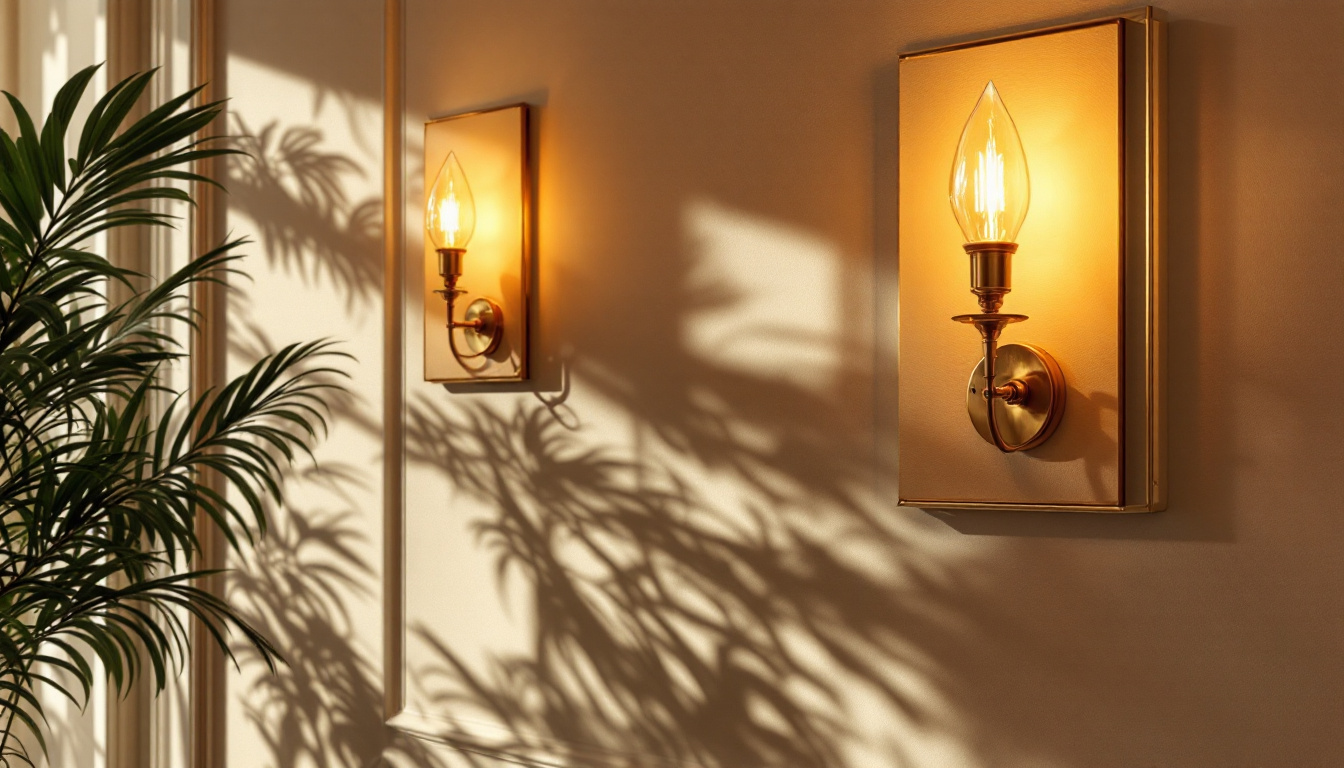
Recessed lighting has become a staple in modern interior design, offering a sleek and unobtrusive source of illumination. For lighting professionals, selecting between 6 inch and 4 inch recessed lights is a fundamental decision that impacts both the aesthetics and functionality of a space.
At their core, the primary difference lies in the diameter of the fixture housing. A 6 inch recessed light typically has a larger housing and bulb size, which translates to broader light coverage and higher lumen output. Conversely, 4 inch recessed lights are smaller, offering a more focused beam and a subtler presence on the ceiling.
Understanding these distinctions is crucial for contractors who aim to deliver lighting solutions that meet client expectations while adhering to project specifications and energy codes.
The physical size of the fixture directly influences how it integrates with the room’s dimensions and design elements. Larger 6 inch fixtures are often favored in spacious rooms with higher ceilings, such as living rooms, kitchens, or commercial spaces, where ample light distribution is necessary.
On the other hand, 4 inch recessed lights excel in smaller rooms or areas requiring accent lighting, such as hallways, bathrooms, or galleries. Their compact size allows for tighter spacing and more precise lighting control. Moreover, the choice of size can also affect the perceived height of a room; 6 inch lights can create a more open feel in larger spaces, while the smaller 4 inch lights can maintain a cozy atmosphere without overwhelming the design.
Typically, 6 inch fixtures accommodate bulbs with higher wattage or lumen output, making them suitable for general ambient lighting. They can effectively illuminate larger areas with fewer fixtures, which can simplify installation and reduce overall costs.
Meanwhile, 4 inch fixtures often use lower wattage bulbs but can be strategically placed to highlight architectural features or create layered lighting effects. Advances in LED technology have narrowed the gap in efficiency and brightness between the two sizes, but understanding the specific lumen requirements remains essential. Additionally, the color temperature of the bulbs can significantly impact the ambiance; warmer tones can create a welcoming environment, while cooler tones might be more suitable for task-oriented spaces like kitchens or offices. This versatility allows designers to tailor the lighting to the specific needs and moods of each room, enhancing both functionality and aesthetics.
Lighting professionals must consider a variety of factors beyond just size and brightness to ensure the best outcome for each project. Here is a comprehensive checklist to guide the decision-making process.
Room dimensions are a primary determinant in fixture selection. Larger rooms with high ceilings benefit from the wider beam angle and higher lumen output of 6 inch fixtures. For example, a 15 by 20-foot living room with an 8 to 10-foot ceiling is an ideal candidate for 6 inch recessed lights spaced approximately 4 to 6 feet apart.
Conversely, smaller rooms or those with lower ceilings, such as bathrooms or closets, typically require the more subtle illumination of 4 inch fixtures. Their smaller size allows for closer spacing, which can prevent dark spots and create an even wash of light. Additionally, in spaces like hallways or stairwells, 4 inch fixtures can provide a gentle glow that enhances safety without overwhelming the senses.
Determining the lighting purpose—whether ambient, task, or accent—is critical. 6 inch recessed lights are well-suited for ambient lighting, providing general illumination. They can also be used for task lighting in kitchens or workspaces when positioned correctly.
4 inch recessed lights are often preferred for accent lighting, spotlighting artwork, or architectural details. Their narrow beam angles enable precise control, which is invaluable for creating depth and visual interest in a room. For instance, in a gallery setting, strategically placed 4 inch fixtures can highlight individual pieces, drawing the viewer’s eye and enhancing the overall aesthetic experience.
Energy codes and sustainability goals are increasingly influencing lighting choices. Both 6 inch and 4 inch recessed fixtures are available with LED technology, which offers superior energy efficiency and longevity compared to traditional incandescent or halogen bulbs.
However, larger 6 inch fixtures may generate more heat, which requires attention to insulation and housing type to prevent energy loss and ensure safety. Lighting professionals should verify that fixtures are rated for insulated ceilings (IC-rated) when necessary and consider air-tight housings to improve energy performance. Furthermore, the selection of dimmable LED options can enhance energy savings and provide flexibility in mood setting, allowing users to adjust brightness based on the time of day or activity.
Installation requirements vary between the two sizes. Larger 6 inch fixtures require bigger cutouts and may be more challenging to install in tight ceiling spaces or where joists are closely spaced. They may also need additional support to meet building codes.
4 inch fixtures are generally easier to install in constrained areas and allow for more flexibility in layout. However, their smaller size demands precision during installation to avoid misalignment and ensure consistent lighting patterns. Additionally, some 4 inch models come with adjustable gimbals, allowing for directional lighting that can be particularly useful in spaces where the layout may change over time, such as in multi-functional rooms.
The visual impact of recessed lighting should complement the overall design scheme. Larger 6 inch fixtures are more visible and can serve as a design element in themselves, especially when paired with decorative trims or baffles.
Smaller 4 inch fixtures provide a minimalist look, blending seamlessly into the ceiling. They are ideal for contemporary designs where subtlety is preferred. Lighting professionals must also consider the finish and trim style to match client preferences and interior themes. For instance, a matte black finish can add a modern edge, while a polished chrome trim might evoke a more traditional feel. The choice of color temperature is equally important; warmer tones can create a cozy atmosphere, while cooler tones may enhance a clean, modern aesthetic, making the right selection crucial for achieving the desired ambiance in any space.
To illustrate the application of this checklist, consider the following scenarios lighting contractors frequently encounter.
A homeowner requests bright, evenly distributed lighting for a kitchen renovation. The room measures 12 by 15 feet with an 8-foot ceiling. Using the checklist, the contractor evaluates room size, lighting purpose, and energy efficiency.
Given the need for strong ambient and task lighting, 6 inch recessed lights spaced 4 to 5 feet apart are recommended. These fixtures provide sufficient brightness for cooking and food preparation while maintaining an uncluttered ceiling appearance. LED modules with dimmable drivers ensure energy savings and customizable ambiance.
In a commercial art gallery, precise accent lighting is paramount to highlight exhibits without glare or shadows. The space features low ceilings and narrow display areas.
Here, 4 inch recessed lights with adjustable gimbals are chosen to direct focused beams onto artwork. Their smaller size allows for closer fixture spacing, creating a layered lighting effect that enhances the visual appeal. The contractor ensures all fixtures are IC-rated due to the presence of insulation above the ceiling.
An office retrofit project requires energy-efficient lighting that meets strict building codes. The space includes open work areas and private offices with varying ceiling heights.
The contractor implements a mixed approach: 6 inch recessed lights in open areas for broad illumination and 4 inch fixtures in private offices for task and accent lighting. This strategy balances efficiency, visual comfort, and design flexibility. Air-tight housings and LED technology contribute to reduced energy consumption and improved indoor air quality.
Beyond the basic checklist, several technical factors should be factored into the decision-making process to ensure optimal performance and compliance.
The beam angle determines how light spreads from the fixture. 6 inch recessed lights typically offer wider beam angles (around 60 to 90 degrees), suitable for general lighting. In contrast, 4 inch fixtures often provide narrower beam angles (30 to 60 degrees), ideal for accent or task lighting.
Lighting professionals should select beam angles based on the intended lighting effect, fixture placement, and ceiling height to avoid uneven illumination or glare.
Choosing the right color temperature is essential for setting the mood and enhancing the appearance of surfaces. Warm white (2700K to 3000K) is common in residential spaces for a cozy atmosphere, while cooler temperatures (3500K to 4000K) are preferred in commercial or task-oriented environments.
Color Rendering Index (CRI) values above 80 are recommended to ensure colors appear natural and vibrant under artificial lighting. Both 6 inch and 4 inch fixtures are available with high CRI LED modules, which is a critical specification for professional installations.
Modern lighting systems often incorporate dimming and smart controls for energy savings and ambiance customization. Lighting professionals must verify that the chosen fixtures and bulbs are compatible with the client’s preferred control systems, whether TRIAC, ELV, or 0-10V dimming.
Proper coordination between fixture specifications and control technology prevents flickering, noise, or reduced dimming range, ensuring a seamless user experience.
Choosing between 6 inch and 4 inch recessed lights is a nuanced decision that requires a thorough understanding of the project’s requirements, space characteristics, and client expectations. By following the essential checklist outlined above, lighting professionals can confidently select fixtures that optimize illumination quality, energy efficiency, and aesthetic appeal.
Ultimately, the best lighting design balances technical performance with creative vision, delivering spaces that are both functional and inspiring. Whether illuminating a cozy bathroom or a sprawling commercial lobby, the right recessed lighting choice enhances the environment and elevates the client’s experience.
Ready to elevate your lighting projects with the perfect balance of quality and value? At LumenWholesale, we provide lighting professionals like you with spec-grade, top-quality recessed lights and more at unbeatable wholesale prices. Say goodbye to local distributor markups and hello to our extensive selection that meets the highest industry standards. With free shipping on bulk orders, you can stock up on premium lighting solutions without any hidden fees. Make the smart choice for your next project and experience the best value in wholesale lighting with LumenWholesale.

Discover the insider tips and strategies lighting contractors use to excel in their field with the Nlight Power Pack.

Discover how sconces for walls can transform your lighting projects from ordinary to extraordinary.

Discover how LED spotlights recessed can revolutionize the lighting industry by saving contractors both time and money.

Discover why lighting contractors should prioritize 4 light fluorescent fixtures in their projects.